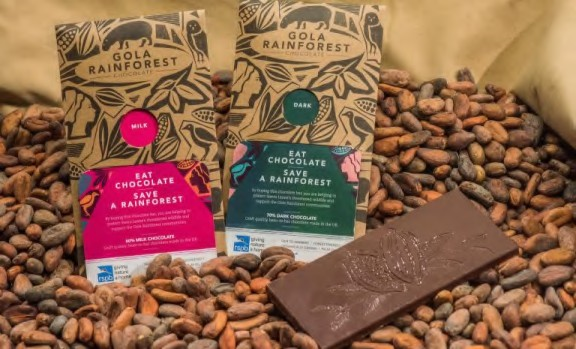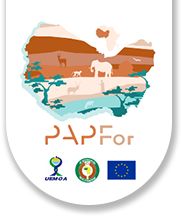Home / Guinean forests / Threats / Deforestation for agriculture / Agriculture for agro-industry / Cocoa
Cocoa
The term ‘cacao’ (cacahualt in the Nahuatl language of the Aztecs) refers to the seeds of the cocoa tree. The cocoa tree needs a warm and humid climate, so it grows on a strip of land between 20° north and 20° south of the equator. Most varieties grow best in the shade of tall trees. The tree’s fruits, cocoa pods, grow directly on the trunk or old branches of the tree and are harvested during two major harvesting seasons per year. Once harvested by hand, they are cut to extract the cocoa beans. These are fermented and dried to become the cocoa beans needed to make chocolate.
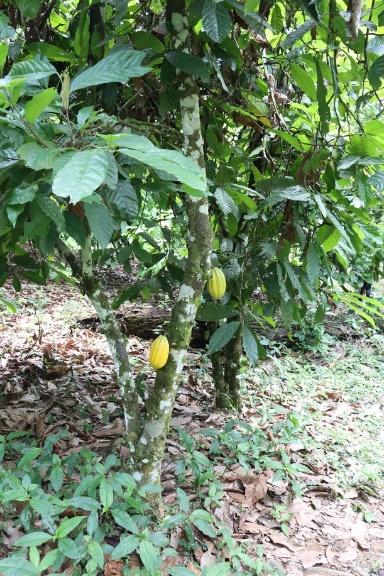
A cocoa tree in a shady plantation
|
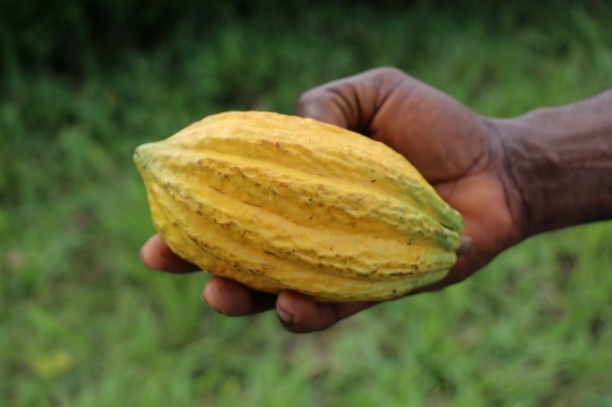
A freshly harvested pod containing cocoa beans
|
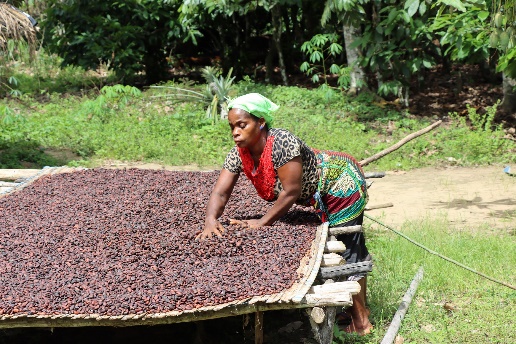
Drying beans in a plantation supported by the PAPFor programme
|
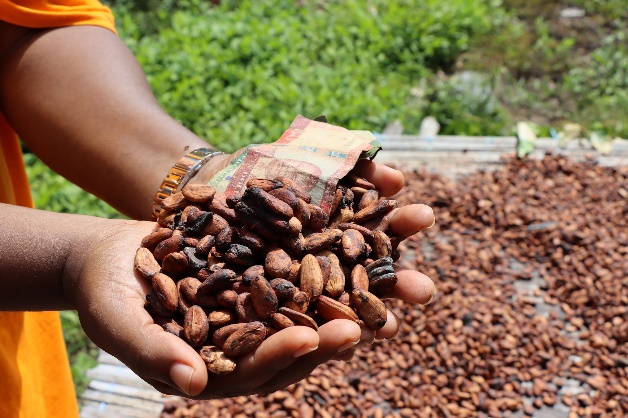
The sale of cocoa beans can provide significant income for rural communities
|
World cocoa production has increased steadily over the past 50 years and is expected to continue to grow. Most production (over two thirds) is in West Africa.
The increase in world cocoa production masks large disparities between countries. As the table below shows, Côte d’Ivoire, Ghana, Nigeria and Cameroon are among the largest cocoa bean producers.
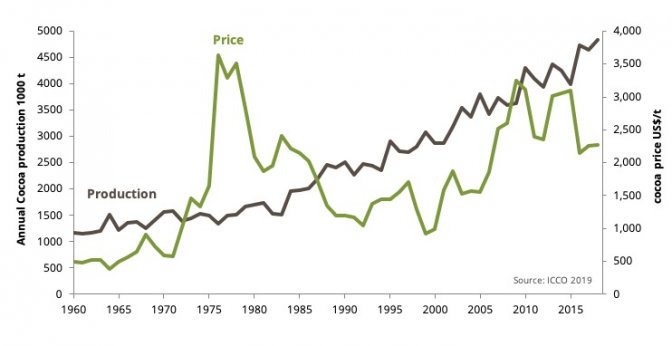
| World Rank | State | 1961 | 1980 | 2000 | 2018 |
| 1 | Côte d’Ivoire | 85 000 | 417 222 | 1 401 101 | 1 963 949 |
| 2 | Ghana | 415 200 | 277 200 | 436 600 | 947 632 |
| 4 | Nigeria | 197 000 | 153 000 | 338 000 | 332 927 |
| 5 | Cameroon | 75 100 | 117 053 | 122 600 | 307 867 |
| 11 | Sierra Leone | 2 840 | 8 497 | 12 000 | 50 150 |
| 13 | Togo | 11 550 | 16 300 | 6 600 | 41 235 |
| 17 | Guinea | 1 500 | 4 000 | 3 300 | 20 700 |
| 23 | Liberia | 670 | 3 709 | 3 100 | 8 225 |
Source : Cocoa (beans) , FAOSTAT, FAO, UN - https://atlasocio.com/classements/economie/agriculture/classement-etats-par-production-cacao-feves-monde.php
The total area under cocoa production is estimated to be 8 million hectares, with an average yield of 150 to 500 kg/ha/year.
In West Africa, cocoa production covers some six million hectares, which provide about 70% of total world production. Côte d’Ivoire and Ghana are the largest producers, followed by Nigeria and Cameroon. Cocoa production increased from about 2 million tonnes in 2000 to about 3 million tonnes in 2010 and about 4.5 million tonnes in 2020. About 6 million people are employed in the cocoa industry in Côte d’Ivoire.
Cocoa expansion and deforestation
Cocoa farming is a labour-intensive process. The crop’s economic viability is just one of the challenges in the supply chain. Farmers often face low yields due to low productivity, declining soil fertility, pests and other environmental factors. This, coupled with a growing market for cocoa beans with little or no added value, is leading to the ‘development’ of new production areas; thus, while the expansion has helped to increase production, this has been at the expense of forest. Deforestation is an increasing risk in some areas due to encroachment into forest reserves and protected areas, human migration and a lack of knowledge of good agro-forestry practices even among farmers.
Concerns about declining production due to tree ageing and disease have prompted some governments to launch large-scale rehabilitation and replanting programmes, providing farmers with improved plants, chemicals and fertilisers. As smallholder farmers do not earn enough from their cocoa to purchase external inputs, traditional mixed planting of cocoa, forest and fruit trees and some oil palm is seen by some as an alternative to a high-input approach.
Studies show that the conditions for sustainable production are not in place and that major structural changes are needed in the cocoa sector to achieve this goal. These changes relate to the economic viability of cocoa on small farms, extensive land use and the ecological impact of current cocoa farming.
There are more and more labelling initiatives for "eco-friendly" cocoa production based on cultivation in shade, thus avoiding total forest destruction.
In the PAPFor landscapes, for example, RSPB has set up a programme in the Gola landscape that ensures minimal environmental impact – including the best possible respect for the conservation status of Gola Rainforest National Park in Sierra Leone – and fair income for communities.
